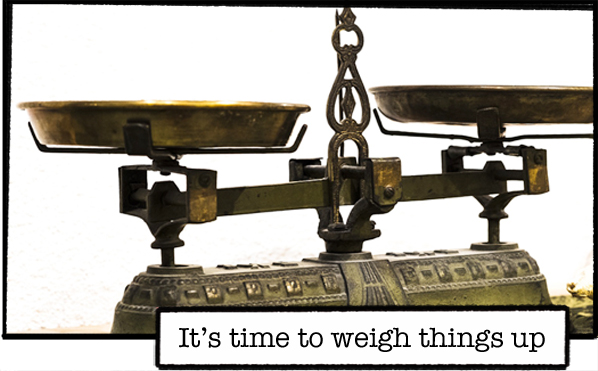There’s been a lot of chatter recently on social media amongst SBLs about the qualifications, skills and knowledge needed to step into a more senior role.
Do we want to be generalists, specialists or executives?
Do we aspire to be COOs, CFOs or even CEOs? How do we get there?
In the developing and progressive MAT landscape, all of these options are now available to us. The pinnacle of the SBL career ladder now has a roof hatch that has been thrown wide open, leading us higher still to new and potentially exciting opportunities.
But what if you don’t want to clamber through the hatch into this new world? What if being an SBL in a school is as high as you want to go? After all, not all teachers aspire to be Headteachers and not all Headteachers want to become a CEO. Why should it be assumed that all SBLs want to become something else?
Many SBLs have invested blood, sweat and tears to get where they are – and they want to stay there. They don’t want to be moved out of their school, chained to their desk and have their eyesight deteriorate through squinting at spreadsheets. (Ok, not all senior jobs are like this but some are – and some just feel like they are because we don’t want to be there!)
Whilst the MAT context allows for opportunities, some SBLs are talking more and more about being forced into senior roles with little consultation and no support.
Some are saying that they only took on a new role to ‘help out’ through the MAT start-up phase but are now not allowed to step back into their original role.
Some are saying that though they were excited at first, the role new isn’t what they thought it would be and despite asking for support and flagging up their concerns, they’re not being listened to.
Others are saying that though they wanted the job, their MAT doesn’t understand the role, seeing as it almost as a ‘super-SBL’ rather than a senior role with accountabilities and responsibilities in its own right. After all, if they’ve done it in one school then they should be able to do it across five, right? This shows a lack of understanding of other key MAT roles, the bodies that govern it and the structures required to run it effectively.
Understandably, setting up a MAT can be costly. The idea of ‘dragging and dropping’ existing staff into other roles may appear to save costs but it does not set the foundation of a sustainable or efficient organisation. Yes, the role of SBL may be evolving but in this mixed economy, there is room for everyone.
So what if this is you?
What if you are in a job you don’t want or are struggling and unsupported?
What can you do?
If you definitely don’t want to continue in your new role…
- Go back to the conversations and meetings you had when the changes to your role were agreed. Review any paperwork you were given or that you signed i.e. a contract or job description.
- Consider what the CEO and Board articulated your new role to be and highlight the differences between what they thought it was and what it actually is.
- Look at the arrangements made to cover your original role (if there were any) and how temporary or permanent these are.
- Speak to your CEO and/or Chair of the Board and explain how you are feeling and what you would like to happen moving forward.
- Treat this as a HR process and use the information you have gathered to state your case. If you need support, speak to your Union or professional network and get some advice.
Of course, if the situation is complex and you can’t find an easy way out, then instead focus on the positives. You have a role that will enhance your CV and you can use this to move into a new role. SBLs with executive level leadership will be attractive to potential new employers. Set yourself some goals and a timeline – get what you need to get from the job and take it with you to a place where you can be happy, doing the job that you love in an organisation that values and supports you.
If you want to stay in the role but you need more support…
- Similar to the above, review what you were told about your new role and look at what the role actually is. Perhaps the role description is correct but the job in itself is un-doable as you are expected to do your original role at the same time.
- If your MAT is in a transition period of growth, then use your knowledge to put forward a developing structure to enable you to do the job you should be doing.
- Produce a business case including phasing, costings, staffing implications, CPD needs etc. and state why these changes are necessary i.e. to mitigate risk and achieve sustainability.
- Often, people don’t know what they don’t know. Unless you spell it out for them and start raising a flag now, they will assume that all is well and that they can carry on regardless.
- If you raise your concerns informally, there is a chance that they won’t be seen as urgent or imperative. Ensure that your concerns are clearly articulated and recorded formally (whether that is at an Executive, Board or Line Management meeting) so that they can be revisited and reiterated to effect change.
We’ve all been in situations where our good nature has been taken advantage of or the grass has looked greener and in reality, it’s not. There’s nothing wrong in standing up for yourself, changing your mind or asking for what you need. If you’re not given the support that you need, regardless of how you got here, then my advice to you is to seriously consider whether this organisation is the right one for you.
You shouldn’t be forced into a job against your will nor should you be expected to undertake a role that may well be impossible.
Don’t settle and don’t suffer.
You’re worth more than that.
Like what you’ve read? Subscribe to this blog by clicking here.
P.S. Have you joined The Business of School Leadership Facebook Group yet? For practical support, advice, tips, tools & guidance about all things school leadership, join us in the community by clicking here.
Written for: Education Executive Magazine (@edexec)




